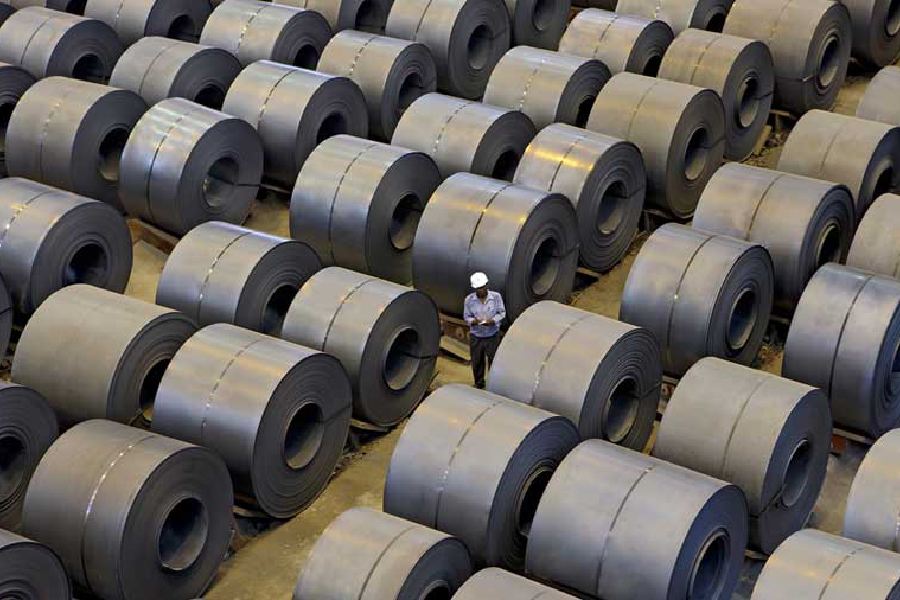Bengal is going to be a big beneficiary of the ambitious growth plans being chalked out by Steel Authority of India Ltd (SAIL) as the maharatna public sector company readies major expansions in Burnpur and Durgapur.
The third largest steel producer in India by output will more than double the capacity of IISCO Steel Plant (ISP) at Burnpur, while the Durgapur Steel Plant (DSP) will also witness significant addition.
After the last round of modernisation and expansion, which was in effect the
construction of a new plant, the capacity of IISCO was raised to 2.5 million tonnes (mt) per annum. SAIL has now firmed up plans to increase the capacity by another 4.5mt, taking the installed capacity to 7mt.
The company has received an in-principle approval for IISCO and the final approval is likely to be in place before March 31, 2024. Following this, SAIL would kick off the tendering process for the plant and machinery.
In Durgapur, the PSU is in the process of finalising the plan. A senior company official informed investors last month that SAIL was on the verge of finalising the product mix for DSP, whose capacity stood at 2.2mt at present. Going by industry standards, the fresh addition is unlikely to be less than the present capacity.
Jayanta Roy, senior vice-president and group head, corporation ratings, Icra, noted that leading primary steelmakers are increasingly looking at higher capacities to achieve economies of
scale.
“Anything around 3mt or more is being considered a viable size now,” he pointed out.
Expansions of IISCO and Durgapur are part of SAIL’s ambitious road map to reach 35mt capacity by 2030-31, adding about 15mt output to its repertoire.
The company is going to take up expansions in a phased manner to distribute the investment over some time.
Works at Burnpur and Bokaro Steel Plant, where a 3mt addition is being planned, are going to be taken up first, followed by Durgapur. SAIL also has integrated steel plants in Bhilai and Rourkela.
In addition, the PSU is also hoping to debottleneck capacities in all of its plants to squeeze in around 3-3.5mt capacity at a lowball investment to help it reach the 35mt capacity by the end of the decade.
As part of this debottlenecking process, SAIL is already expanding the capacity of the blast furnaces at Bokaro and DSP.
While the company is still mum on the proposed investment before the final stamp on the plan is given by the board, industry usually works on the thumb rule of $1 billion for 1mt addition. However, much will depend on the configuration and product mix of the fresh capacity being planned.
“There are multiple factors that determine investment in a steel plant, most notably the configuration and downstream facilities. However, as a thumb rule it can be anywhere between $750 million-$1 billion per one million tonne,” Roy explained.
As of now, both IISCO and DSP produce long products, which are used in the construction and infrastructure sectors.
For instance, IISCO produces wire rods, bar, channel, angles among others. DSP, on the other hand, manufactures TMT bars, wheels and axles among others.
IISCO carries the legacy of being India’s first steel plant, which began operation at Kulti, near Burnpur, in 1870. In contrast, DSP was set up at the active persuasion of former chief minister Bidhan Chandra Roy in 1959 after the Jawaharlal Nehru-led government at the Centre pushed for self-reliant India.
If the dice are rolled as hoped, the twin projects may usher a multi-year economic development in Burnpur and Durgapur which are situated about 40 kilometres apart from each other.
During the phase of construction, the project works will require thousands of skilled and semi-skilled workers to boost the local economy and the state.
After completion of the work, the enhanced capacities will create formal and informal jobs in the plants as well as in the downstream industries that are likely to come up in the area which was once monikered as the Ruhr of Bengal, named after the Ruhr valley of Germany, once the most prominent industrialised zone in Europe.










